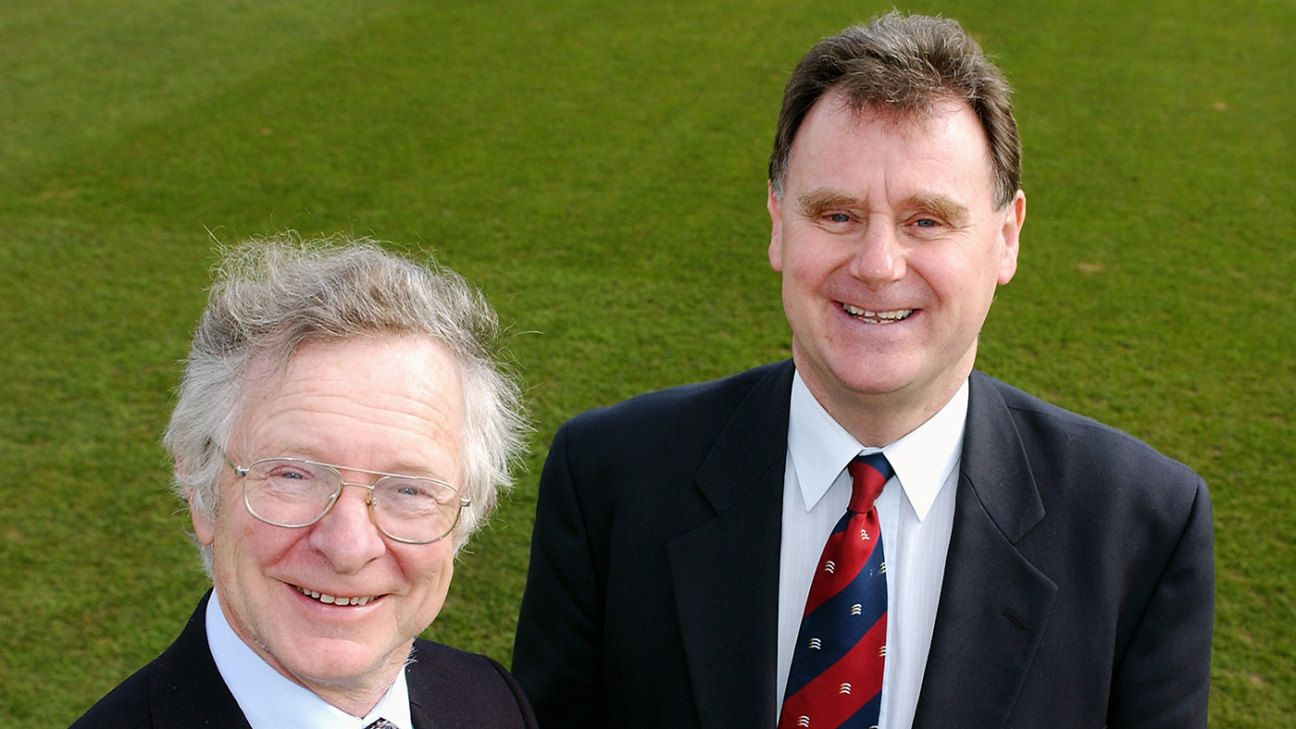Tony Lewis, the former university lecturer whose name will forever be synonymous with cricket’s convoluted Duckworth-Lewis rain rules, has died at the age of 78.
An unlikely star of world cricket, Lewis was propelled to fame in 1999 when his complex formula, devised in conjunction with his fellow mathematician Frank Duckworth, was officially adopted by the ICC to help calculate fair run-chases in the event of overs being lost to rain during that summer’s World Cup.
The impact that the two men had on the sport is best illustrated by the problems that rain delays had caused until they came forward with their algorithmic solution in the mid-1990s. Their calculations may have baffled generations of cricket lovers over the past two decades, but they have been universally recognised as the best solution yet devised to the sport’s most intractable problem.
Whereas first-class cricket, with its acceptance of the draw, had never previously given much thought to engineering results after rain delays, the growth of one-day cricket in the 1970s and 1980s brought with it a need to ensure a satisfactory finish, particularly in key knock-out matches at World Cups.
The sport’s initial solution had been to award victory to the side that had scored the highest average number of runs in the overs played – an approach that took no account of wickets lost. However, the nadir was reached at the 1992 World Cup, when the decision to discount the least productive overs of the team batting first resulted in a string of farcical finishes, most famously in the semi-final between England and South Africa at Sydney, where South Africa’s target was reduced from 22 from 13 balls to 21 from one.
After that, an appeal went out to cricket-loving stattos worldwide, initially via Christopher Martin-Jenkins on Test Match Special – can anyone, anywhere, devise a better solution?
Enter Duckworth, who had unveiled his prototype rain-rule in the 1980s but had been largely ignored on the basis of complexity. However, his subsequent presentation to a Royal Statistical Society conference in 1992, “Fair Play in Foul Weather”, caught the attention of Lewis, then a lecturer in management science at the University of the West of England in Bristol.
The pair began to work together on fine-tuning the calculation, and after finding the then-TCCB newly receptive to the idea, it was first used in a match situation on New Year’s Day 1997, when England were set a revised target of 186 in 42 overs after bowling Zimbabwe out for 200 in the second ODI – they fell short by seven runs.
While there is no simple way to explain the formula’s workings, it essentially treats overs and wickets in hand as “resources” available to a batting side, and makes proportionate adjustments to those resources in the event of rain interruptions.
The formula has not been without its critics, particularly after the advent of T20 cricket, when wickets in hand – a less critical factor in the shorter format – were deemed to have been given too much weight for sides batting second.
In 2014, the name of Steven Stern, an Australian professor, was added to what is now known as the “DLS” method, after he took over the day-to-day running of the formula, and made his own adjustments to reflect modern scoring rates.
Messrs Duckworth and Lewis were awarded MBEs in 2010 for their services to cricket and mathematics, and also lent their name to a cricket-themed pop group, founded in 2009 by Neil Hannon of The Divine Comedy and Thomas Walsh of Pugwash.
“‘It is with much sadness that the ECB has learned of the passing of Tony Lewis MBE, aged 78,” read a statement from the board. “Cricket is deeply indebted to both Tony and Frank’s contributions to the sport. We send our sincere condolences to Tony’s family.”
